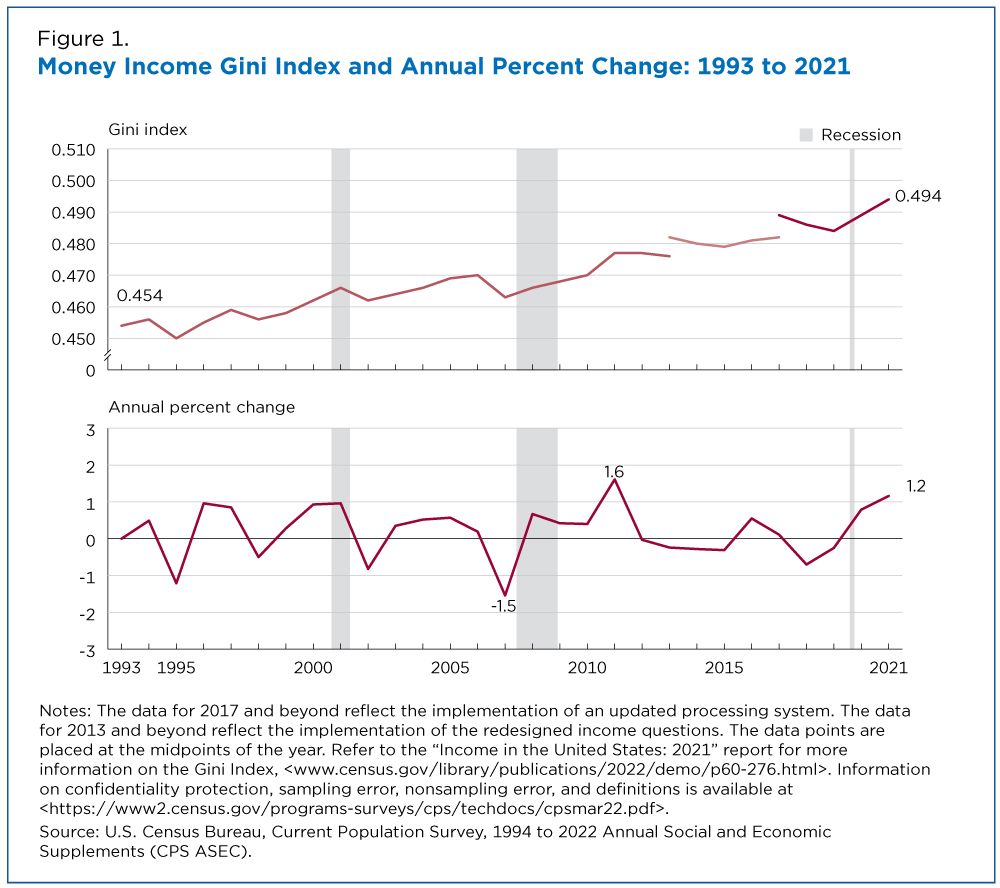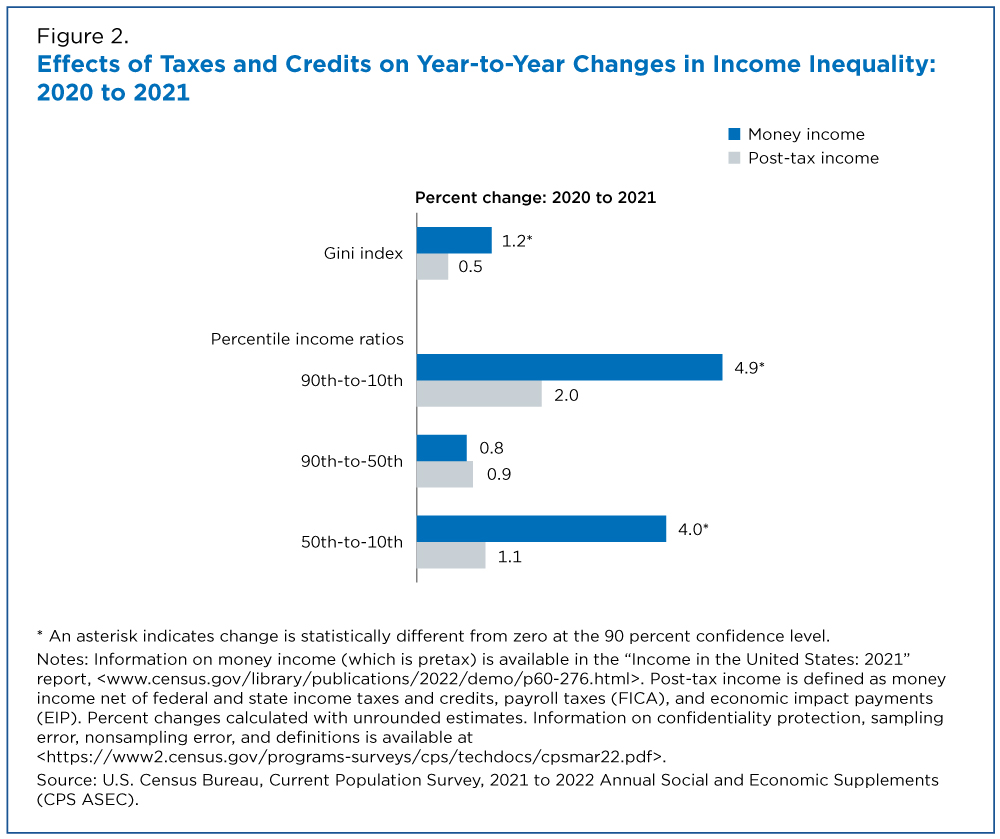Real median U.S. household income was $70,784 in 2021, statistically unchanged from the previous year, although income inequality increased for the first time since 2011, according to this week’s (Sept. 14, 2022) U.S. Census Bureau release of the Income in the United States: 2021 report.
The data are from the Current Population Survey Annual Social and Economic Supplement (CPS ASEC).
Declines in real income at the bottom of the income distribution resulted in increased income inequality as measured by the Gini index — a common measure of income inequality.
Income inequality refers to how evenly income or income growth is distributed across the population. Higher income inequality represents less equal income distribution or growth. The report provides several measures of inequality. In this story, we focus on changes in the Gini index and the ratios of income at different percentiles.
The Gini index measures income inequality ranging from 0 to 1 — reflecting the amount that any two incomes differ, on average, relative to mean income.
It is an indicator of how “spread out” incomes are from one another. A value of 0 represents perfect equality, meaning all households had the same amount of income. A value of 1 indicates total inequality, meaning that one household had all the income.
Using pretax money income, the Gini index increased by 1.2% between 2020 and 2021 (from 0.488 to 0.494). This annual change was the first time the Gini index had increased since 2011.
Prior to 2011, the Gini index had not shown an annual increase since 1993, the earliest year available for comparable measures of income inequality. Since 1993, the Gini index has increased 8.8%.
What Drives Income Inequality
When the distribution of income becomes more unequal, the Gini increases. However, this indicator does not offer insight into how income inequality increased.
The median represents the midpoint (50th percentile) of the income distribution. Comparing how incomes have changed at different points in the income distribution can tell us what is driving income inequality. The 2021 data suggest that the decline in real income at the bottom of the income distribution drove the increase in the Gini index and here’s why.
At the 10th percentile, 10% of the households had income at or below $15,660 in 2021, a decline of 4.4% from 2020 ($16,386).
However, at the 90th percentile, 10% of households in 2021 had income above $211,956, not statistically different from the 2020 estimate of $211,438.
The ratio of the 90th- to 10th-percentile increased from 12.90 in 2020 to 13.53 in 2021. That means income at the top of the income distribution was 13.53 times higher than income at the bottom, a 4.9% increase from 2020.
In addition, the ratio of the 50th- to 10th-percentile (inequality between the middle and bottom of the income distribution) also increased — up 4.0% from 4.34 in 2020 to 4.52 in 2021.
Meanwhile, the ratio of the 90th- to 50th-percentile (inequality between the top and middle of the income distribution) was not significantly different over this period, further indicating that inequality did not change in the upper end of the income distribution.
Pretax and Post-tax Measures
The Income in the United States: 2021 report also contains an appendix that compares pretax to post-tax income inequality measures.
Post-tax income in 2021 is defined as money income after federal and state taxes and credits, payroll taxes (FICA), the third stimulus payment, and state stimulus payments.
Stimulus payments and an expansion to the Child Tax Credits affected household income last year, so it is important to account for these policies in income and inequality estimates.
Calculated using pretax money income, the Gini index increased 1.2% between 2020 and 2021. In contrast, the annual percentage change was not statistically different when calculated using post-tax income and showed no significant changes from 2020 in the percentile income ratios.
Comparing inequality measures using pretax and post-tax income in 2021 illustrates how the tax system can reduce inequality. Inequality, as measured by the Gini index, was 12.9% lower when calculated using post-tax income compared to pretax income.
Definitions and information on confidentiality protection, methodology and sampling and nonsampling error are available in this technical documentation page.











Comments